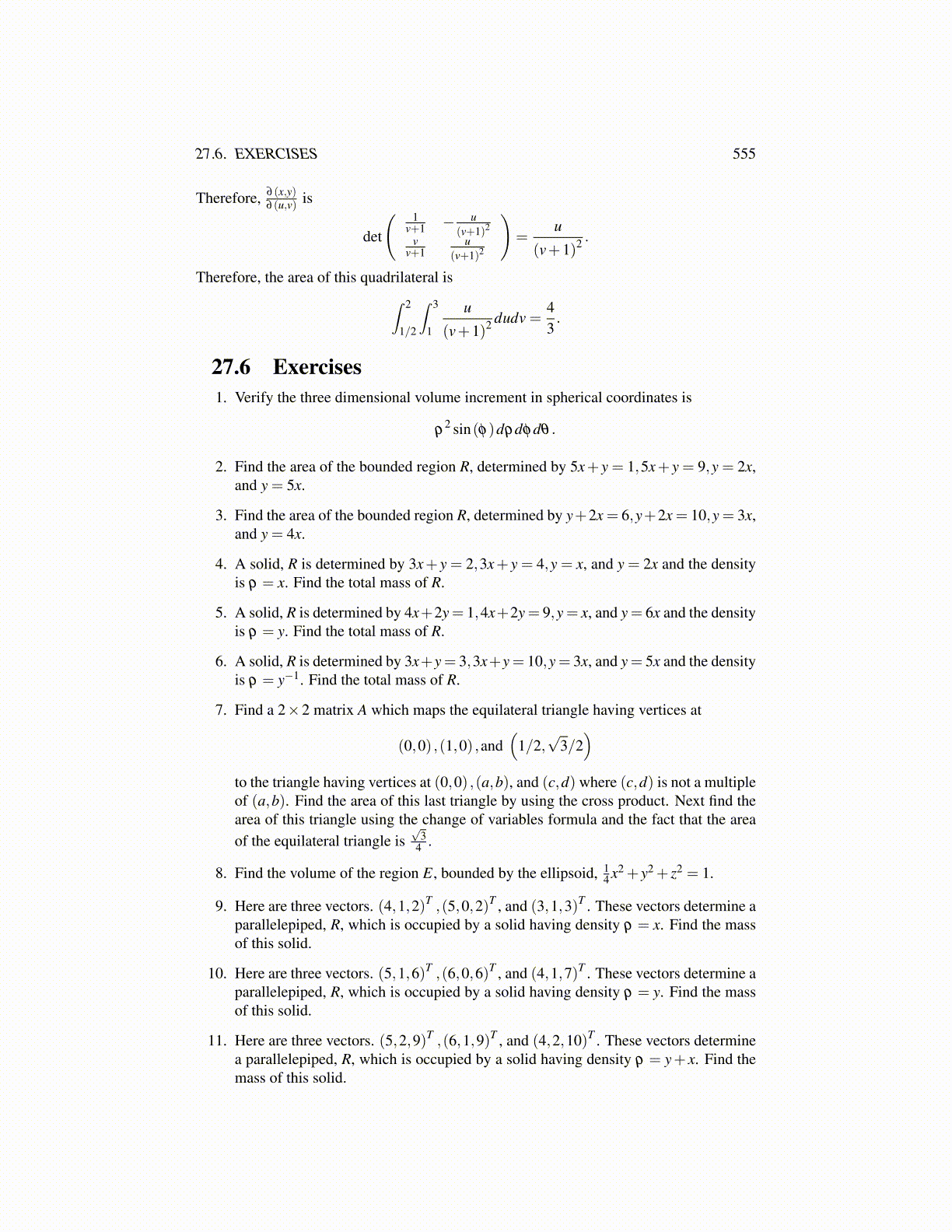
27.8. EXERCISES 555
16. Suppose a solid of mass M occupying the region B has moment of inertia, Il about aline, l which passes through the center of mass of M and let l1 be another line parallelto l and at a distance of a from l. Then the parallel axis theorem states Il1 = Il +a2M.Prove the parallel axis theorem. Hint: Choose axes such that the z axis is l and l1passes through the point (a,0) in the xy plane.
17. ∗ Using the parallel axis theorem find the moment of inertia of a solid ball of radiusR and mass M about an axis located at a distance of a from the center of the ball.Your answer should be Ma2 + 2
5 MR2.
18. Consider all axes in computing the moment of inertia of a solid. Will the smallestpossible moment of inertia always result from using an axis which goes through thecenter of mass?
19. Find the moment of inertia of a solid thin rod of length l, mass M, and constantdensity about an axis through the center of the rod perpendicular to the axis of therod. You should get 1
12 l2M.
20. Using the parallel axis theorem, find the moment of inertia of a solid thin rod oflength l, mass M, and constant density about an axis through an end of the rod per-pendicular to the axis of the rod. You should get 1
3 l2M.
21. Let the angle between the z axis and the sides of a right circular cone be α . Alsoassume the height of this cone is h. Find the z coordinate of the center of mass of thiscone in terms of α and h assuming the density is constant.
22. Let the angle between the z axis and the sides of a right circular cone be α . Alsoassume the height of this cone is h. Assuming the density is σ = 1, find the momentof inertia about the z axis in terms of α and h.
23. Let R denote the part of the solid ball, x2 +y2 + z2 ≤ R2 which lies in the first octant.That is x,y,z≥ 0. Find the coordinates of the center of mass if the density is constant.Your answer for one of the coordinates for the center of mass should be (3/8)R.
24. Show that in general for L angular momentum, dLdt = Γ where Γ is the total torque,
Γ≡ ∑ri ×F i where F i is the force on the ith point mass.